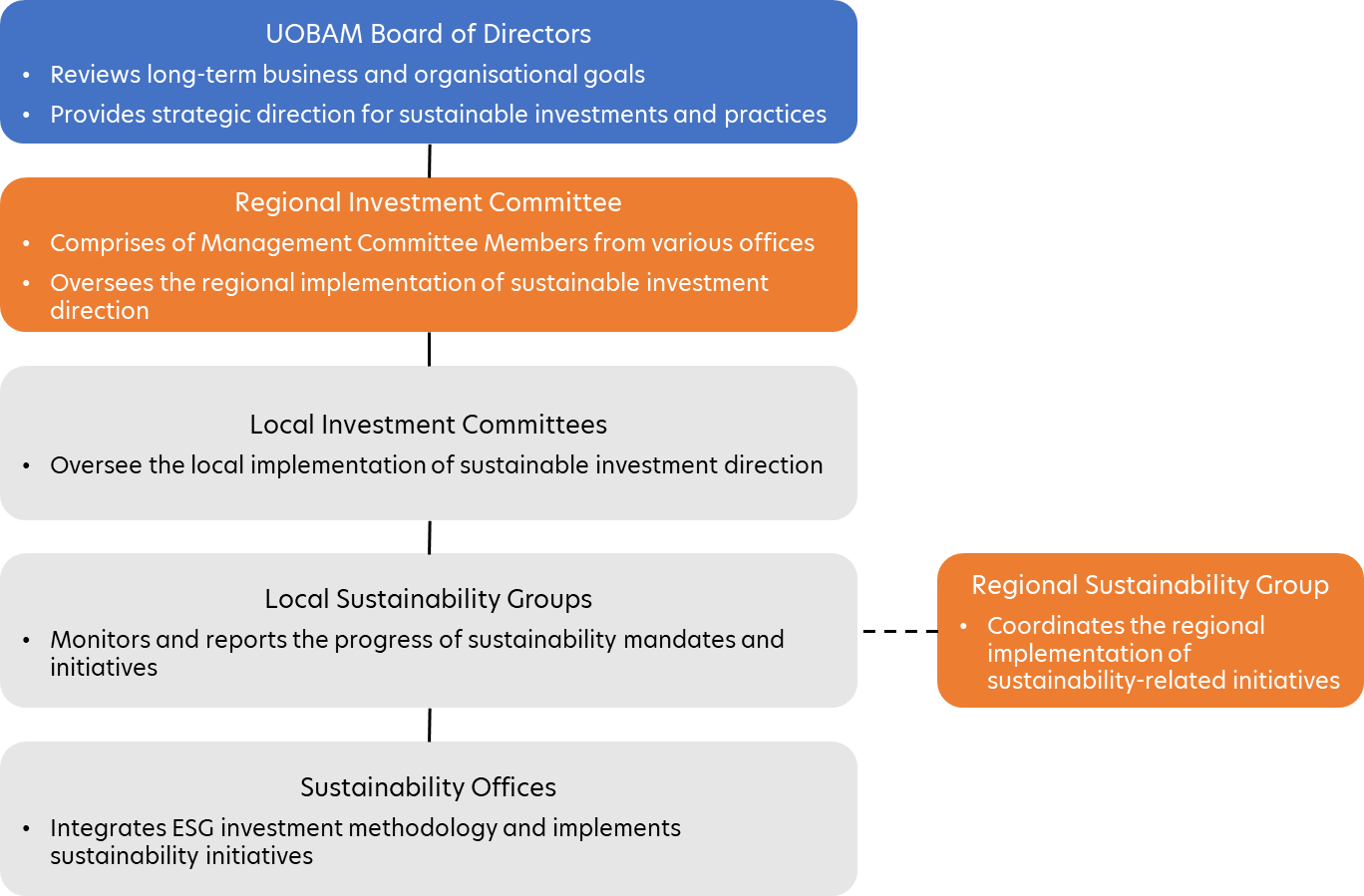UOBAM’s Active Ownership Approach serves to facilitate dialogue, engagement, and proxy voting. We leverage our regional footprint and the local expertise of our regional investment teams to execute meaningful dialogues and engagement which will drive strategic investment decisions for the sustainable investments we make.
These activities form a key component of our responsible investment approach and fulfils UOBAM’s fiduciary duty as an investment manager to act in the best long-term interests of our clients.
Company Engagement:
We leverage our regional footprint to identify a range of thematic and material ESG issues that can affect our investee companies in the long-term and engage them to ensure that they are well prepared to mitigate these issues.
By engaging with companies, we can also encourage improvement in their ESG disclosures, identify the need to advocate positive change, communicate our concerns, and improve their practices on ESG issues, where necessary.
We prioritise our engagements based on several factors, including the geography of companies, size of our holdings, severity of identified material ESG issue, potential to generate long-term value following a successful engagement, and specific client request(s). UOBAM engages with companies through a variety of channels, but we do not currently disclose the details of our conducted engagements.
As part of our escalation strategy, UOBAM may pursue various courses of action should a company constantly fall short of the expected targets, including voting at annual company meetings, reducing our investment holdings, or divestment.
Proxy Voting:
In Singapore, we work with the Institutional Shareholder Services (ISS) on proxy voting and consider internationally recognised sustainability-related standards in support of ESG resolutions. While we have authorised ISS to vote on our behalf, we retain full discretion over all voting decisions and reserve the right to exercise our votes contrary to the recommendations by ISS.
There may be situations where UOBAM may choose not to vote or abstain from voting:
- Where administrative or other procedures result in the costs of voting outweighing the benefits;
- The voting securities are part of a securities lending program and UOBAM is unable to vote securities that are out on loan;
- A meeting notice is delivered close to the meeting date and UOBAM has insufficient time to adequately assess the issues being tabled at the shareholders’ meeting and / or process the vote;
- UOBAM sells shares prior to a company's meeting date and decides not to vote those shares, on the basis that UOBAM shall not be restricted from trading in a security due to an upcoming shareholder meeting; and
- Voting securities have been blocked from trading in order to be tendered for voting purposes and UOBAM believes that preserving the ability to trade the security is in the best interest of the beneficiaries;
- In event of a situation where regulatory obligations and rulings of the SIC imposed on UOB Group that also apply to UOBAM, may prohibit UOBAM from voting on securities due to its deemed affiliation for a corporate action.








